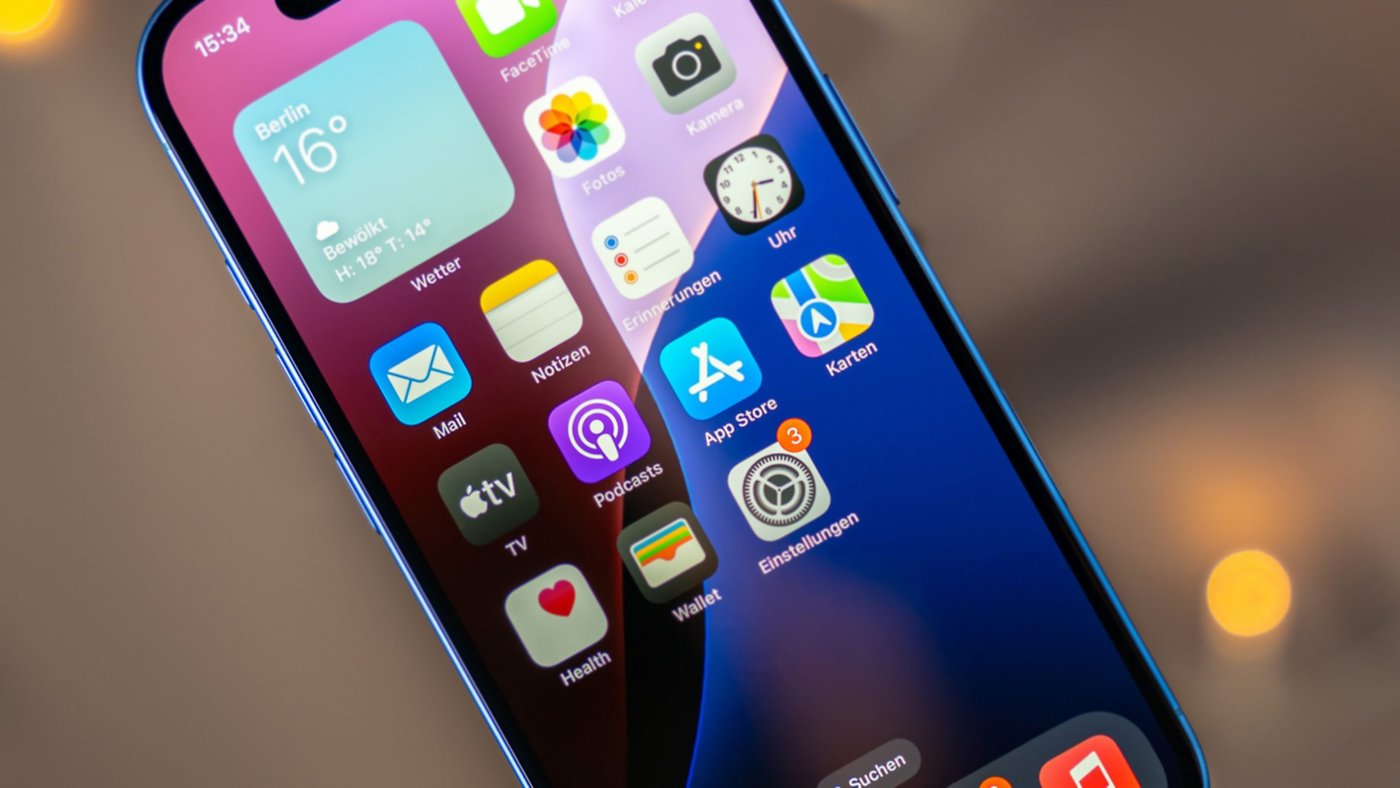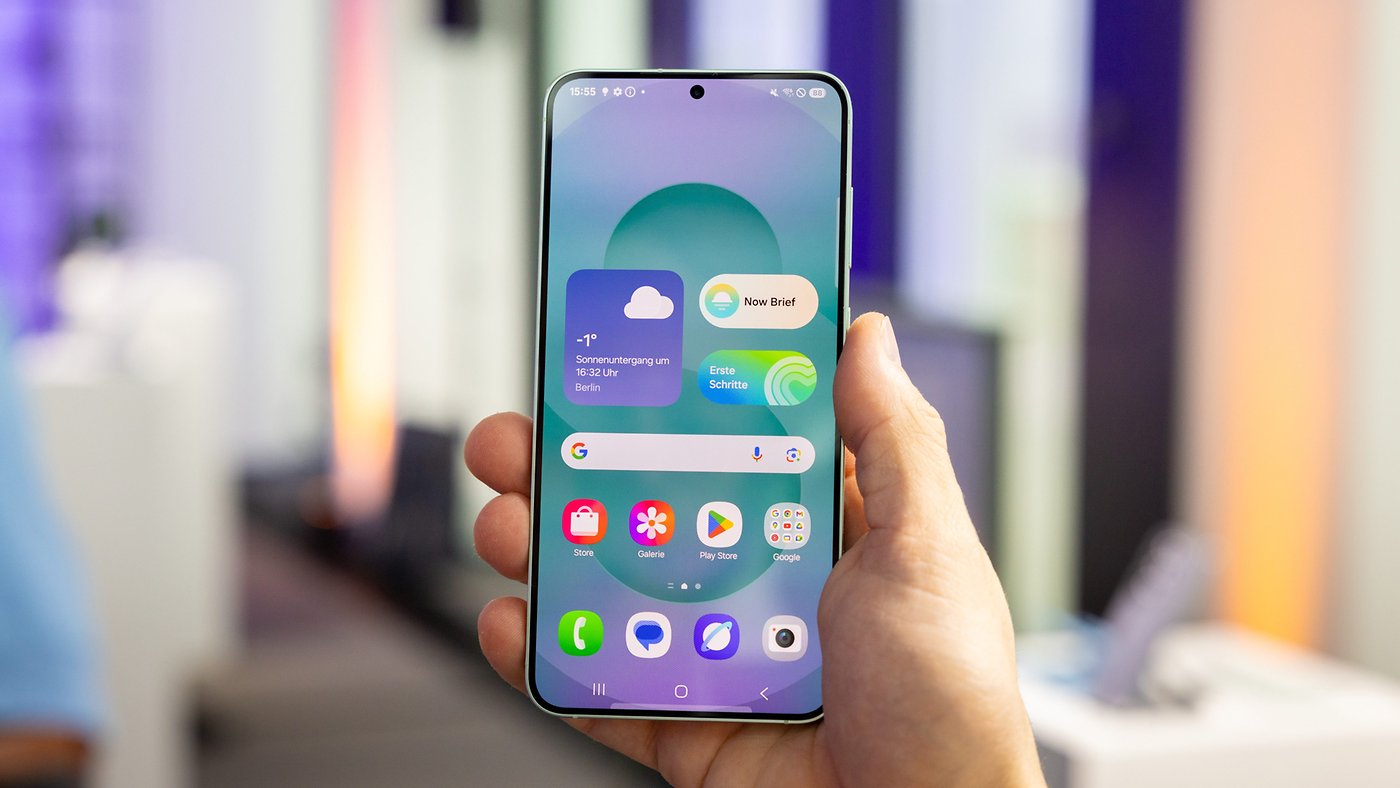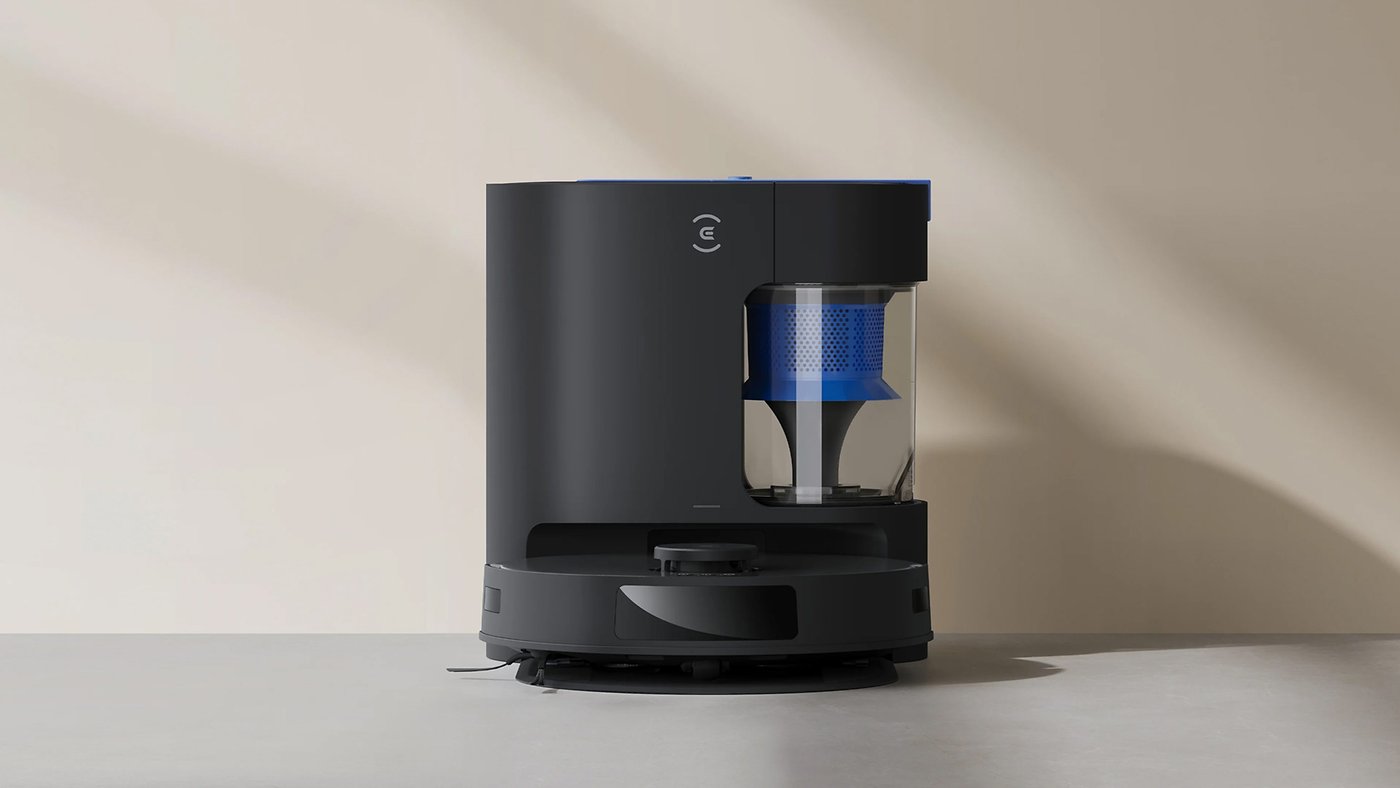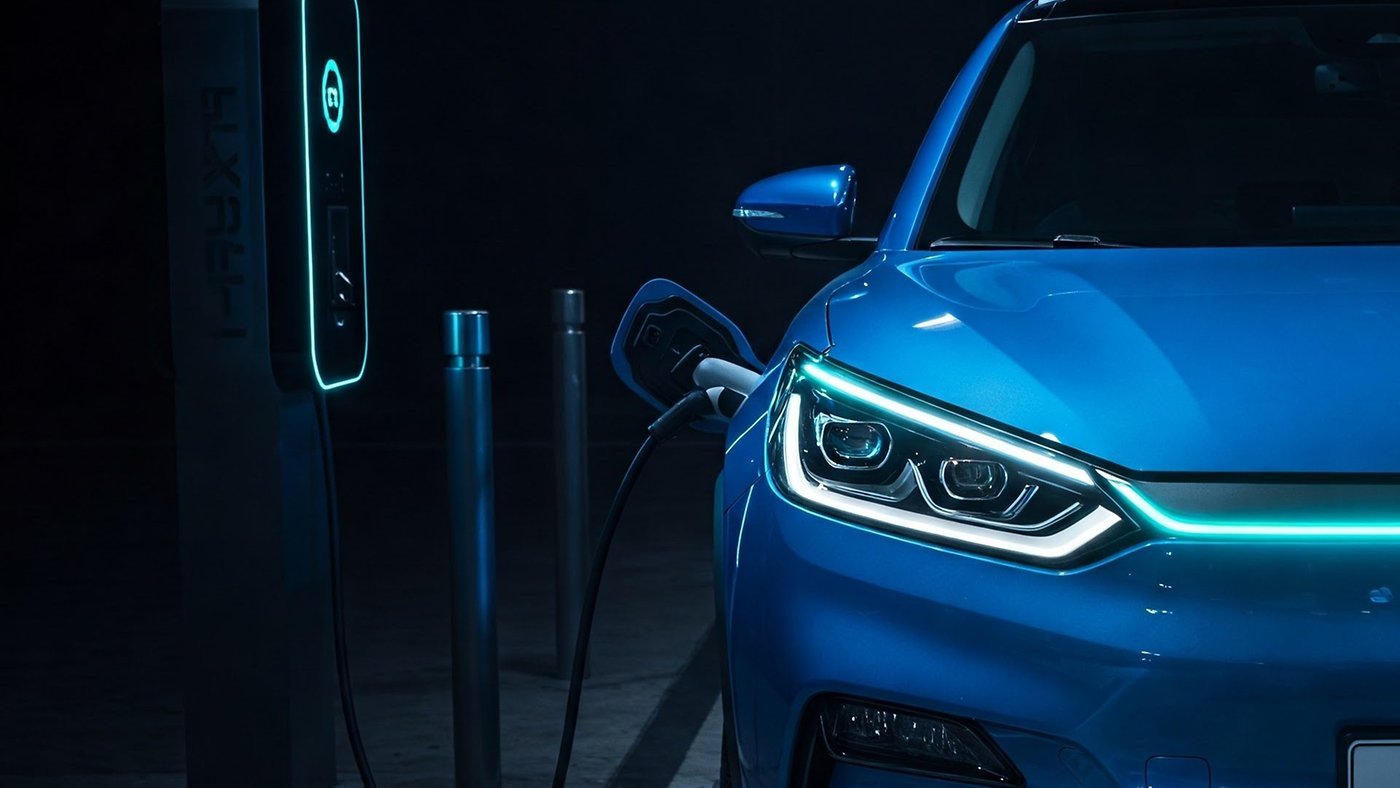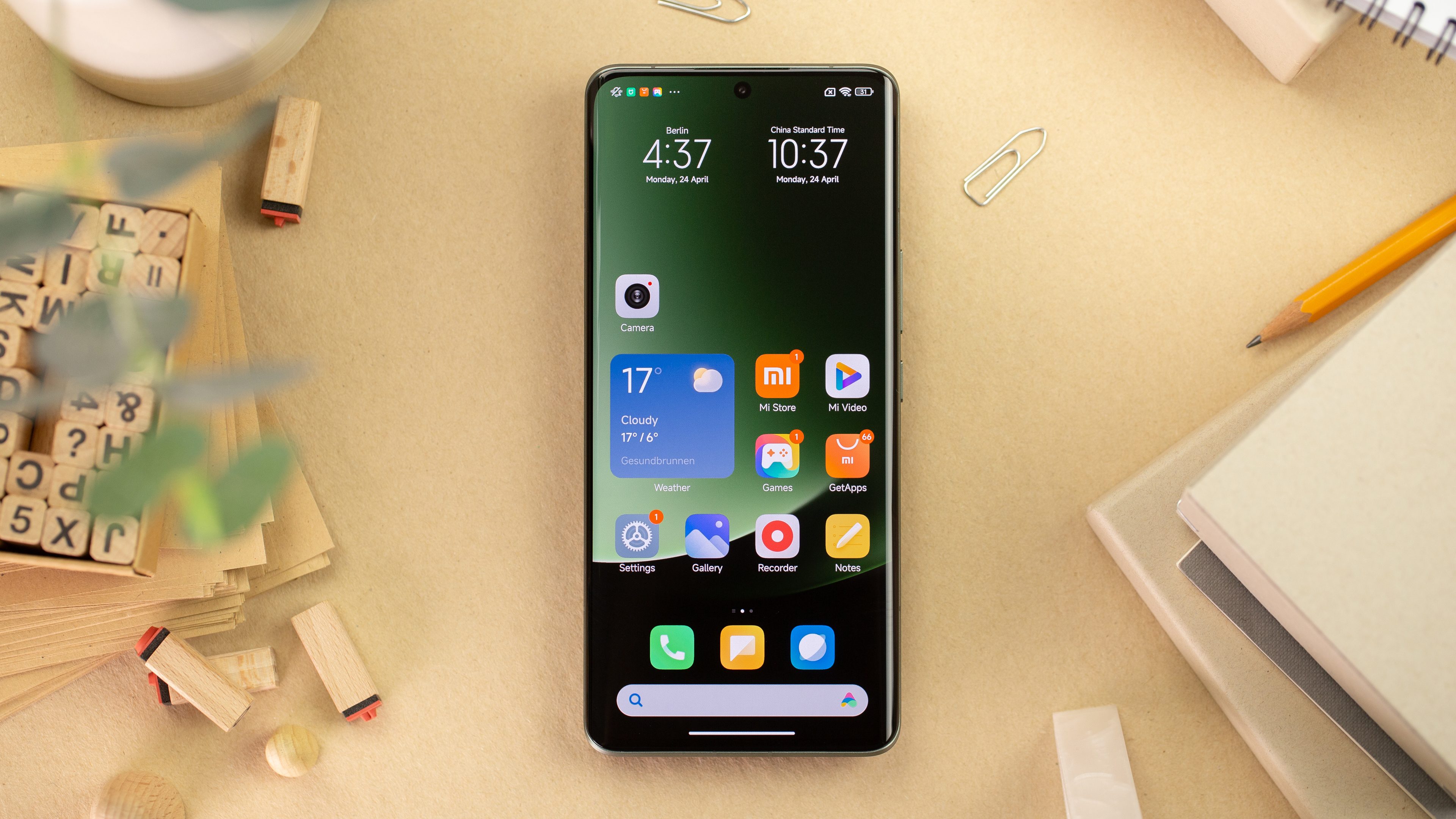
Want colorful widgets, giant app folders, spectacular animated wallpapers, and literally transform your Xiaomi smartphone’s interface? Well, I’m exaggerating a little, but here are some tips for customizing the home screen (and lock screen) of your Xiaomi smartphone running MIUI 14.
MIUI 14, Xiaomi’s Android overlay, is one of the busiest interfaces on the market. The customization options are very different from those available on Samsung’s One UI, Oppo/OnePlus’ ColorOS, and Android Stock as on the Google Pixel.
Contents:
Change wallpaper and install Super Wallpapers
Let’s start with the basics. In MIUI, instead of having sub-menus in settings, we have plenty of dedicated native applications.
To change the wallpaper (and the theme we’ll see below), you have to go through one of these pre-installed apps called Themes. I know, it’s very basic and I’m sure most of you know how to do it.
There are several collections to choose from, although Xiaomi offers an “MIUI” selection with the official wallpapers released with each new version of its overlay.

You can also import your own wallpapers, as you would on any other smartphone. And you’ll see that this option is particularly interesting for the famous Super Wallpapers.
Here too, it’s a well-known and popular feature. Super Wallpapers are live wallpapers. They depict nature scenes with landscapes or even planets. And when you unlock your Xiaomi smartphone and access the home screen, a large zoom in or out is continuously applied.
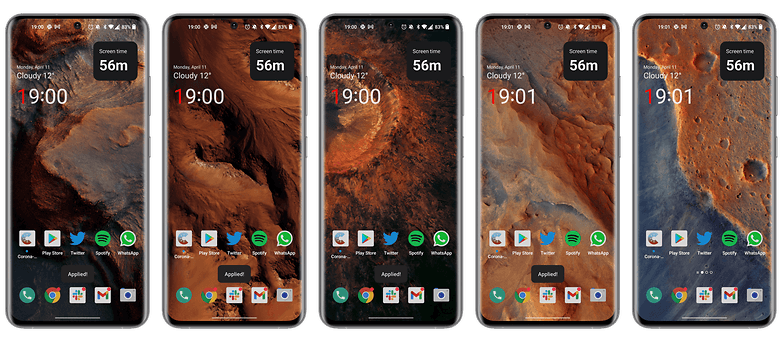
The animations are beautiful and the effect is successful. But this function is not available by default on all Xiaomi devices. You’ll need a powerful enough SoC to prevent the animations from sucking up too many resources.
Nevertheless, I’ve devoted an entire tutorial to explaining how to apply Super Wallpapers to any Android smartphone, and not just Xiaomi.
Changing the theme of your MIUI interface
To change the theme of MIUI 14, the procedure is exactly the same as for the wallpapers. Go to the Themes application.
Personally, I regret that Xiaomi did not implement the dynamic themes of Android 13. This option allows you to synchronize the color of the entire interface with the dominant colors of your wallpaper.
But, as always with Xiaomi, you can tinker. And the community is very active, with numerous alternative themes. Personally, I opted for the “Pixel Go” theme, which somewhat crudely emulates the interface of a Google Pixel smartphone.
But as far as I know, you can’t have themed icons either on the home screen or in the quick access pane. It’s a shame.
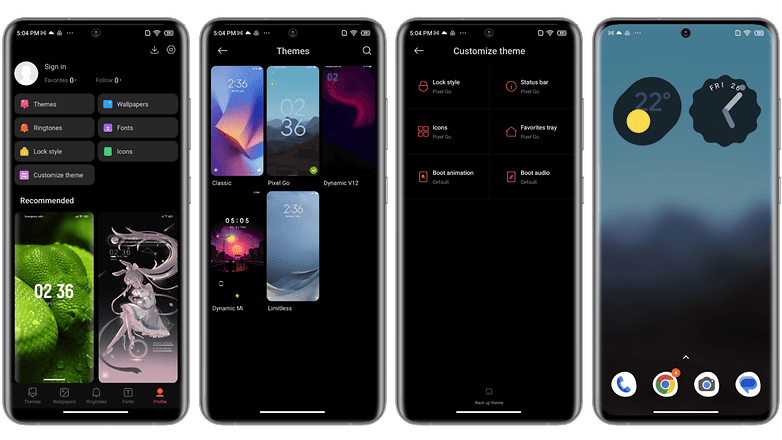
Activate/deactivate the app drawer and Control Center
In MIUI 14 you can choose from three types of home screen: classic, with app drawer and lite.
The classic home screen is the one you’re all familiar with if you’ve owned a Xiaomi smartphone in the past. It’s a bit like iOS.
The home screen with an app drawer lets you swipe up to access all your installed apps. This is the one I prefer because it makes navigation much more intuitive.
The lite mode features larger icons and would be more advisable for accessibility reasons, in my opinion. There are fewer applications on the screen, they’re easier to open with the larger icons and you get better legibility with a larger font size.
- Go to Settings, then Home Screen.
- Press Home Screen again.
- Select the With Application Drawer option.
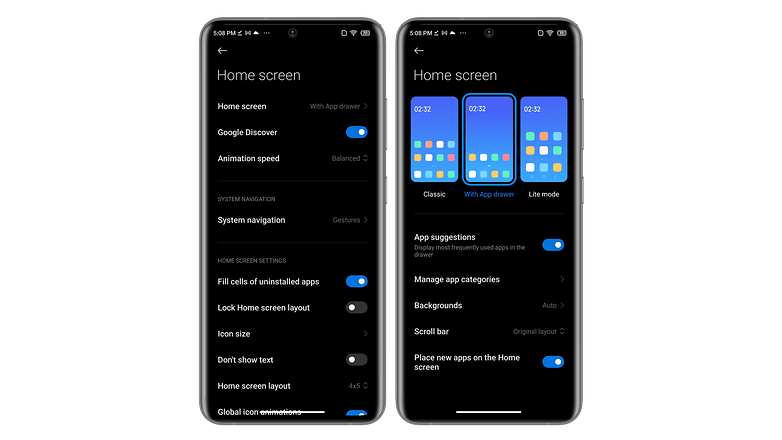
The final point of customization: the Control Center. Basically, you can opt for an old-fashioned quick-access menu. Notifications and shortcuts are then grouped together in the same pane. And all you have to do is swipe down to scroll down.
But you can also opt for the new version, which separates the Notifications pane from the Control Center. In this case, you have to swipe down from the left of the screen for notifications and swipe up from the right for the Control Center.
I prefer the first option because it’s more intuitive. But to change the style of MIUI’s Control Center:
- Go to Settings, then Notifications & Control Center.
- Scroll to Control Center Style.
- Choose the New version.

Add widgets and giant folder icons
Unfortunately, with every new version of MIUI, it’s disillusionment. Xiaomi teases us with lots of promising new features. But the vast majority of them remain exclusive to the Chinese version of the OS.
Such is the case with MIUI 14’s new widgets, which are not available in Europe. There is a way to install custom widgets via third-party applications (KWGT, if you’re familiar with it). But I’d need a whole article to explain all that to you. If you’re interested, I could dig into the subject.
However, one of the few new features of MIUI 14 to have landed on European ROMs is the giant application folders. You can create big icons for your grouped apps. To do this:
- Create an app folder (long press on an app > drag to another app > release).
- Hold down on the folder.
- Press Edit folder.
- Choose between sizes: Regular, Enlarged, and XXL.
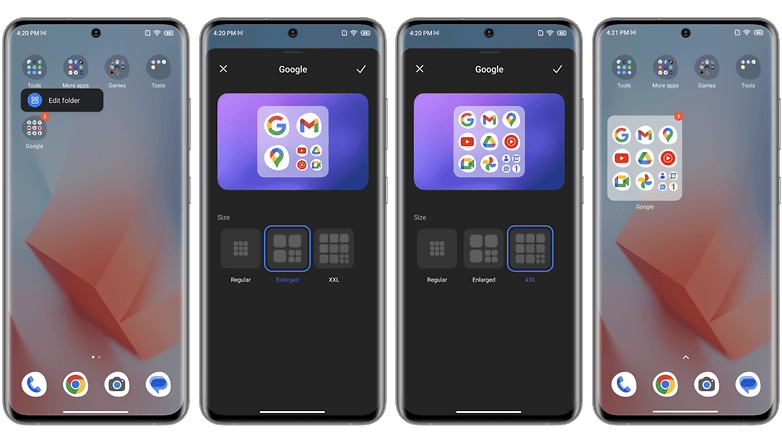
Customizing the lock screen and Always on display
For the Always on Display, you’ll have to go to the sub-menu titled… Always on display & Lock screen.
You can then opt to activate Always on Display by pressing the corresponding switch. Then simply customize the background image. You can add a personal image from your gallery, although I wouldn’t recommend it. All my attempts failed, and I always ended up with an image that was far too small on a black background.
Instead, choose one of the many clocks and wallpapers available by default. Be sure to disable the Carousel wallpaper option, too, as this will prevent you from accidentally displaying your folder photos.
Finally, you can also add a shortcut to quickly launch the camera without having to unlock your screen. Strangely, this option is not activated by default.
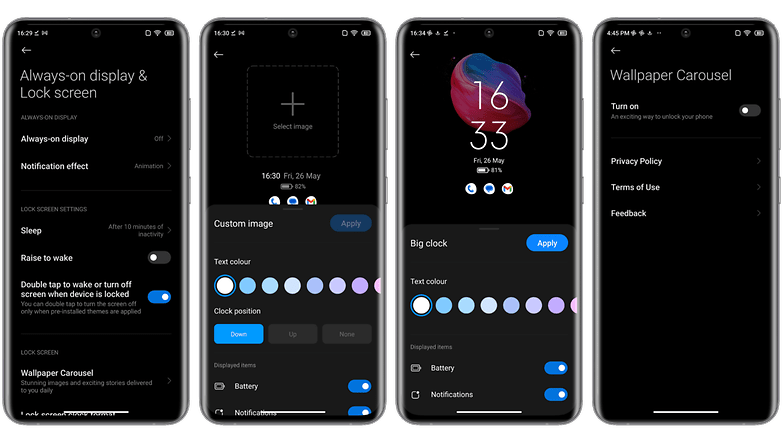
What do you think of these tips? Do you know of any other home screen customization options for Xiaomi smartphones? What do you think of MIUI 14’s design and customization options? Do you prefer a “busy” interface or a more streamlined look like Stock Android?
To find out more, I recommend reading our guide to customizing the home screen of your Samsung smartphone and our guide to customizing the home screen of your iPhone.



